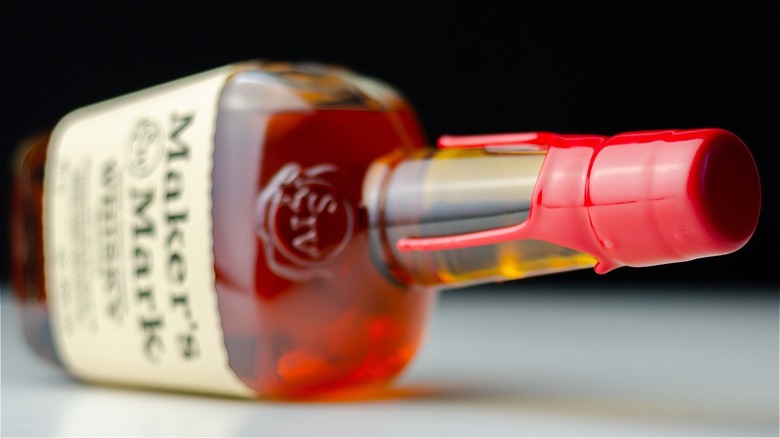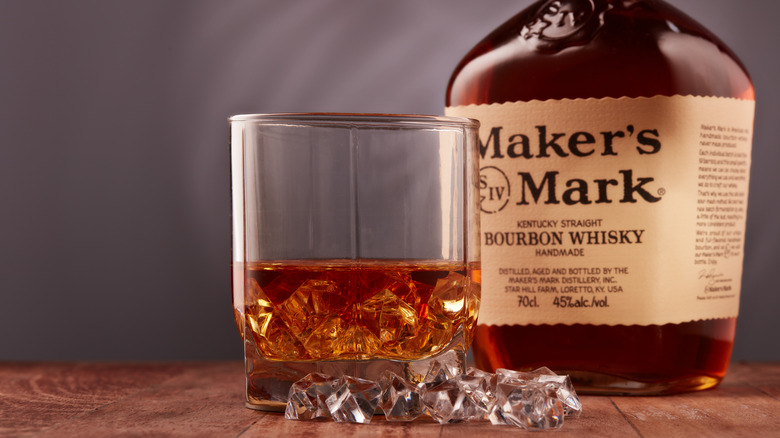Concocting Maker's Mark Bourbon Is Actually A Really Complicated Process
Bourbon is America's answer to the whiskeys and Scotches of the world. Of course, in the 1800s, the Scots and Scots-Irish immigrants brought their distilling with them to the U.S., but there's no firm timeline for when whiskey and bourbon diverged. The origin of the name whiskey is even debated – no one knows if it's from Bourbon County in Kentucky, which was named after the French royal family, or the area where the whiskey was shipped from called Old Bourbon, which was stamped on casks and bottles.
A good rule of thumb to remember is that all bourbons are whiskeys, but not all whiskeys are bourbons, so to legally be called bourbon, distillers need to follow a few rules. Bourbon must be made in the U.S. – the rule about bourbon needing to be produced in Kentucky isn't necessarily true – you can make bourbon in Hawaii or Montana if you follow the rules. But if you're making bourbon in Canada, it's not bourbon, you're making Canadian whisky. And what goes into the bottle is as important as what comes out of it — the grain mix bourbon is distilled from must be at least 51% corn (via Food Network).
To give it color and flavor, the distillate must be aged in new American oak charred barrels versus whiskey, which can be aged in barrels that previously held wine, sherry, or other whiskeys. As for strength, the aging process starts at 125 proof and isn't bottled at less than 80 proof (via The Manual). Bourbon producer Maker's Mark takes their process seriously.
The rules for bourbon production ensure that the heritage stays intact
Maker's Mark has had the same process for over 60 years to ensure consistency. Every bottle that gets shipped worldwide is produced in their distillery in Loretto, Kentucky. It's labor-intensive and physical; nearly every step of the process is touched by human hands. The first step is seasoning and drying out the American oak, that's then cut, shaped, and steamed into new barrels before being charred for 40 seconds. After the mash of corn, wheat, and malted barley is cooked, it's mixed with a strain of yeast that's 150 years old, which converts the sugars from the mash into alcohol. This is then distilled in copper stills before being transferred to the barrels for the aging process.
Maker's Mark has forty-six storage houses with over a million barrels being aged at one time for anywhere between five to seven years. The barrels spend at least three "hot Kentucky summers" on the top rack of the warehouse before being taste-tested to determine if it's ready to move on to age in cooler temperatures, according to Maker's Mark. When it's ready, it's filtered to remove any impurities. The emptied barrels are filled with water and resealed to draw out any extra whiskey from the barrel, which is later used to dilute the whiskey to 90 proof before bottling (via Eater). The final step is bottling and applying that iconic, dripping red wax seal, which you can do yourself if you visit their distillery.

